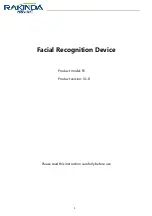
XML Directory Service
When an XML URL requires authentication, use the parameters
XML UserName
and
XML Password
.
The parameter
XML UserName
in XML URL is replaced by $XML UserName.
For example:
The parameter XML UserName is
cisco
. The XML Directory Service URL is
http://www.sipurash.compath?username=$XML_User_Name
.
This results in the request URL:
http://www.sipurash.com/path?username=cisco
.
XML Applications
When authentication is required for CGI/Execute URL via Post from an external application (for example, a
web application) to the phones, the parameter
CISCO XML EXE Auth Mode
is used in 3 different scenarios:
• Trusted—No authentication is performed (local user password is set or not). This is the default.
• Local Credential—Authentication is based on digest authentication using the local user password, if the
local user password is set. If not set, then no authentication is performed.
• Remote Credential—Authentication is based on digest authentication using the remote username/password
as set in the XML application on the web page (to access an XML application server).
Macro Variables
You can use macro variables in XML URLs. The following macro variables are supported:
• User ID—UID1, UID2 to UIDn
• Display name—DISPLAYNAME1, DISPLAYNAME2 to DISPLAYNAMEn
• Auth ID—AUTHID1, AUTHID2 to AUTHIDn
• Proxy—PROXY1, PROXY2 to PROXYn
• MAC Address using lowercase hex digits—MA
• Product Name—PN
• Product Series Number—PSN
• Serial Number—SERIAL_NUMBER
The following table shows the list of macros supported on the phones:
Macro Expansion
Macro Name
The form $$ expands to a single $ character.
$
Replaced by general-purpose parameters GPP_A through GPP_P.
A through P
Cisco IP Phone 6800 Series Multiplatform Phones Administration Guide
142
Phone Administration
XML Directory Service
















































